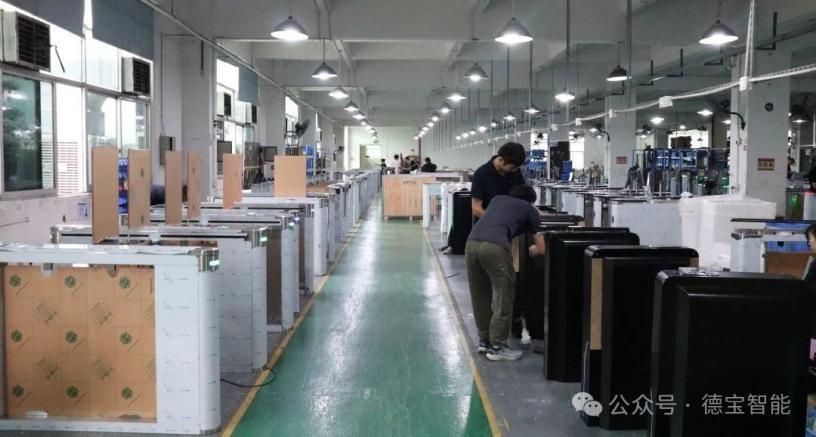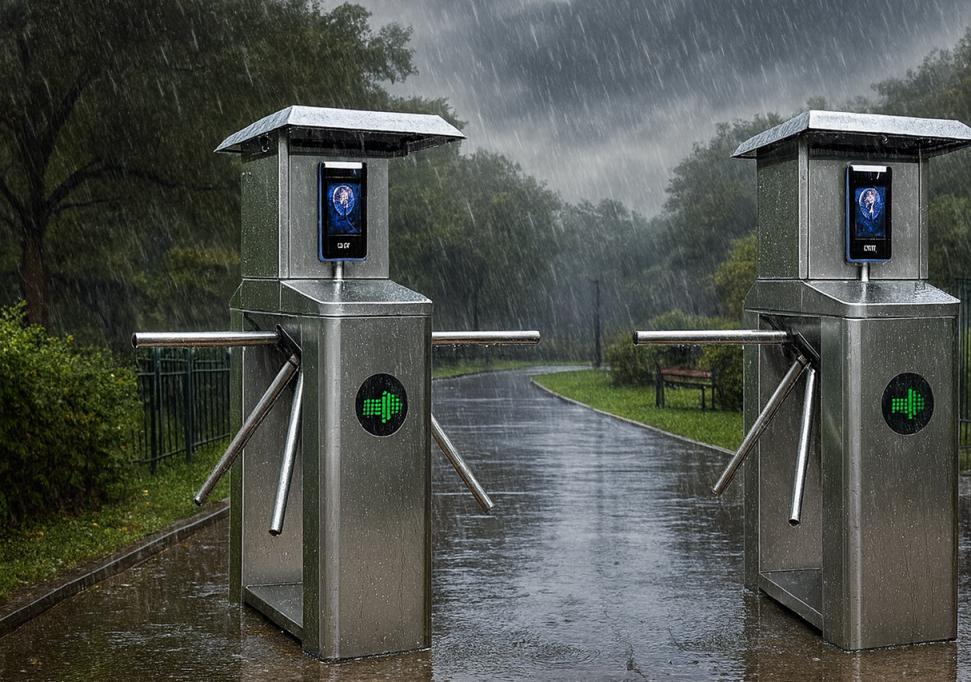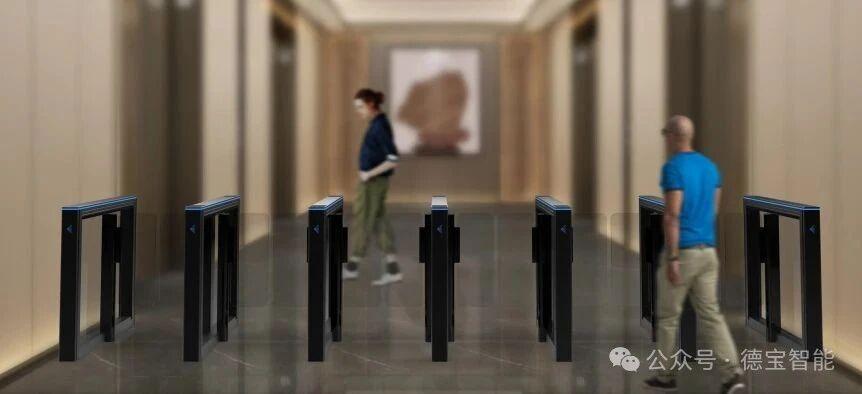How to Test Flap Barrier Products Before Deployment


Flap barriers are an essential part of modern security systems, helping manage access in various environments, such as offices, airports, and transportation hubs. However, many projects face unexpected delays or security gaps because the barriers fail during final setup or initial operation. These failures can range from minor delays to major security breaches, causing frustration, additional costs, and disruptions to the overall system.
Flap barrier testing before deployment plays a crucial role in preventing such issues. Proper testing ensures that the system is not only compatible with the infrastructure but also operates efficiently and safely. By thoroughly testing the barrier’s mechanical, electrical, and integration systems before installation, you can avoid expensive on-site fixes and reduce the risk of downtime after deployment.
Testing also ensures that the barrier functions according to design specifications, meets safety standards, and integrates smoothly with other systems. The results of testing will directly impact the long-term durability and reliability of the flap barrier. In this guide, we will walk through the essential testing procedures to perform before deploying a flap barrier system in the field.
The Importance of Pre-Deployment Testing
Pre-deployment testing is an essential step in the installation of any flap barrier system. It’s easy to assume that once a barrier is purchased and delivered, it is ready for immediate installation. However, skipping the testing phase can lead to a range of problems, from malfunctioning sensors to failed integration with other access control systems.
Testing ensures that all components of the barrier, from the mechanical parts to the electrical systems and safety features, work as expected under real-world conditions. Additionally, it helps identify any potential issues that could arise once the barrier is deployed, such as system incompatibilities or safety violations. Without testing, facility managers and project leads are left with a higher risk of disruptions and unexpected costs during the installation process.
Furthermore, testing before deployment helps to ensure that the barrier complies with regulatory and safety standards, which is crucial for maintaining both operational integrity and legal compliance. In this section, we’ll dive into the different types of tests you should conduct to ensure the system is ready for smooth and secure operation.
Why Flap Barrier Testing Matters
Flap barrier testing is not just a formality but a critical component of ensuring long-term, trouble-free operation. Barriers that have undergone thorough pre-deployment testing will likely experience fewer failures, reduced maintenance costs, and better performance in the field. The most significant benefit of a tested system is reliability. When you test flap barriers before installation, you are confirming that they will function as expected, with fewer issues arising after deployment.
In addition to reliability, testing also ensures that the barrier integrates smoothly with your existing infrastructure. Whether it’s a building’s access control system, security network, or emergency protocols, integration testing will guarantee that all systems work seamlessly together. A well-tested flap barrier will also provide greater safety for both users and personnel, as testing safety sensors and emergency mechanisms ensures that no accidents will occur under normal or emergency conditions.
Flap barrier testing helps streamline the entire deployment process, from setup to operation. By taking the time to verify each aspect of the system, you can avoid delays, disruptions, and costly adjustments once the barrier is installed. It ultimately leads to a more effective security system with improved user throughput, fewer technical problems, and enhanced safety.
Mechanical Testing: Ensuring Durability and Reliability
Mechanical testing is one of the most critical procedures in flap barrier testing. Flap barriers are subject to constant wear and tear, so ensuring that the mechanical components are durable enough for long-term operation is essential.
A common mechanical test is a cycle test, which simulates how the barrier will perform over an extended period. For example, the flap barrier may be opened and closed hundreds of times in a controlled environment to ensure that the motor functions properly and the flap mechanism doesn’t wear out prematurely. Additionally, mechanical tests verify that the system’s frame and moving parts are sturdy, reliable, and resistant to damage under stress.
Mechanical testing should also cover aspects like the alignment of the flap, noise levels, and smoothness of operation. If the barrier makes excessive noise or experiences friction during operation, it could indicate a mechanical flaw that needs to be addressed before deployment.
Electrical Testing: Verifying Power and Control Systems
Electrical testing ensures that the flap barrier’s power supply and control systems work correctly. These systems include the motors that drive the barrier, the sensors responsible for detecting user movement, and the connection to the building’s electrical network. Electrical failures can lead to malfunctioning barriers, which could leave access points unsecured or make them difficult for users to operate.
During electrical testing, the power supply is verified for efficiency and consistency. The wiring is checked to ensure that all components are properly connected, and the control panels are tested to confirm that they communicate correctly with the barrier system. Additionally, the electrical systems are tested under conditions similar to what they will experience in the field, ensuring that they can handle fluctuations in power or occasional surges.
Electrical tests also verify the correct functionality of backup systems, ensuring that in the event of a power failure, the barrier will continue to operate or fail safely. Verifying electrical systems prior to deployment ensures that the barrier operates reliably and reduces the risk of electrical malfunctions post-installation.
Cycle Testing: Evaluating Long-Term Operation
Cycle testing is an essential part of flap barrier testing, especially for systems designed for high-traffic areas. This test helps assess the durability of the mechanical components, including the motor, sensors, and moving parts, under sustained stress.
For most barriers, the typical cycle test involves running the system through hundreds or even thousands of open/close cycles, replicating daily usage. This helps identify potential wear-and-tear issues, such as motor overheating, wear on moving parts, or failures in the sensor systems. For instance, if the barrier’s motor fails after a specific number of cycles, this could indicate a design flaw or suboptimal material choice.
Cycle testing should also take into account variations in environmental conditions, such as temperature fluctuations or humidity, which may affect how the barrier operates. By testing the system under these conditions, you can ensure that it performs consistently over time, regardless of the operating environment.
Sensor and Safety Checks: Ensuring User Protection
Safety is one of the most important aspects of flap barrier testing. Since flap barriers are typically installed in high-traffic areas, they must include safety mechanisms to prevent accidents. One of the most critical safety components is the barrier’s sensors, which ensure that users are detected accurately and that no harm comes to them during operation.
During testing, sensors are checked to ensure that they can detect the presence of users and objects in the area around the barrier. This includes anti-pinch sensors, which prevent the barrier from closing on a user, and anti-tailgating sensors, which ensure that only one person passes through at a time. The testing should simulate real-life scenarios where a person might approach or pass through the barrier at varying speeds and angles.
The testing procedures for flap barriers also involve assessing the accuracy of these sensors. For example, infrared sensors or photoelectric sensors are tested to make sure they can properly detect and validate the presence of authorized users. If the sensors fail to function correctly, there could be risks of either granting unauthorized access or preventing legitimate users from passing.
Flap barriers also need to be tested for emergency override functionality, ensuring that, in case of an emergency or system malfunction, the barrier can be manually overridden to allow unrestricted passage. This is particularly important for situations where evacuation is necessary. Verifying these safety features before installation is critical to ensure the system meets all regulatory safety standards, and it minimizes risks for users.
Integration Testing: Ensuring Compatibility with Other Systems
Flap barriers are often part of a broader security system, integrated with access control, building management, and surveillance systems. As such, it’s essential to ensure that the barrier is compatible with these systems to operate efficiently and provide smooth access control. Integration testing ensures that all components work together as part of a seamless system.
The integration testing involves connecting the flap barrier to existing access control systems and testing communication between the systems. For example, when an authorized user presents their credentials (such as a keycard or biometric scan), the barrier should immediately recognize the access request and open accordingly. If the barrier doesn’t respond correctly, or if there is a delay, this could disrupt the flow of people and compromise security.
Furthermore, integration testing should assess how well the flap barrier works with building management systems (BMS) and surveillance technologies. A well-integrated system allows for real-time monitoring, automated logging of access events, and enhanced security response protocols. To confirm successful integration, it’s essential to simulate different operational scenarios, ensuring that the barrier communicates with all necessary systems smoothly.
When you are assessing the barrier performance in these integration tests, focus on key points like response time, system synchronization, and error handling. Ensuring flawless integration helps to avoid headaches after installation and guarantees that your flap barrier works seamlessly with the facility’s other security systems.
Emergency Override Testing: Verifying Fail-Safe Mechanisms
A key feature of any security system is its ability to respond appropriately in emergencies. Flap barriers must include emergency override functionality to ensure that they can be operated manually during critical situations, such as power failures, system malfunctions, or evacuation scenarios.
Emergency override testing is done to ensure that, in case of emergency, the barrier can be overridden safely. This is especially important in high-security environments or crowded places where an immediate evacuation may be necessary. During testing, you will verify that the barrier can be manually opened or deactivated without any issues.
Additionally, emergency override functionality must comply with regulatory standards to ensure the safety of both the barrier system and the individuals using it. Some models may require a key or access code to trigger the manual override, while others may have a physical release mechanism. Whichever method is used, it’s important to test it thoroughly to confirm that it can handle a high-stress situation effectively.
Testing also ensures that emergency overrides are in place for situations where users are trapped or blocked, allowing for immediate access or escape without risk of injury or harm. Verifying these mechanisms ensures that the flap barrier remains operational and compliant with safety regulations.
Compliance and Standards for Flap Barrier Testing
Before deploying flap barriers, it’s crucial to ensure that the systems meet all applicable safety, performance, and regulatory standards. Compliance testing ensures that the barrier system adheres to industry guidelines and legal requirements. This step helps reduce the risk of liability and ensures that the installation meets the highest standards for safety and performance.
Industry testing standards often vary based on location, but many manufacturers will adhere to the guidelines set by global certification bodies, such as UL (Underwriters Laboratories) or ISO (International Organization for Standardization). These standards cover the electrical safety of the system, mechanical robustness, and compliance with fire and safety codes. Many flap barriers are subject to stringent fire safety standards, especially in public or high-traffic areas.
To ensure compliance with the relevant standards, you can refer to trusted certifications and testing protocols provided by organizations such as UL or the Security Magazine. These certifications demonstrate that the barrier has been rigorously tested for durability, safety, and performance and meets the minimum standards required for deployment in public spaces.
By conducting compliance tests before deployment, you can guarantee that the system is safe, reliable, and legally compliant. Testing for compliance should be a priority, as failure to meet regulations could lead to serious penalties, operational delays, and potential safety hazards.
Final Approval and Documentation
Once all the tests have been conducted, the next step is final approval. After each test is completed and results are documented, the project team will review the findings to ensure that the flap barrier system is ready for deployment. Final approval is granted only after all tests meet the necessary performance criteria and safety standards.
In this final stage, it is essential to document the results of all the barrier pre-installation tests. This documentation should include test reports, certifications, and any issues found during testing. The reports provide a record of the system’s performance and help facilitate future maintenance or troubleshooting if issues arise.
Final approval ensures that everything has been thoroughly checked, that all systems are functioning correctly, and that the barrier system is compliant with the required regulations. The documentation also serves as a reference for ongoing maintenance and upgrades, as it outlines any known issues and how they were addressed during the testing phase.
Checklist for Flap Barrier Testing Before Deployment
Before installing your flap barrier system, ensure that all of the following tests have been completed and verified:
- Mechanical Durability Tests – Verify that the barrier operates smoothly, checking for issues with the motor, flap, and hinges.
- Electrical Integrity and Wiring Tests – Confirm that the power supply, wiring, and control systems are functioning properly.
- Cycle Tests – Ensure the barrier can handle long-term use by running multiple cycles to simulate regular operation.
- Sensor and Safety Feature Checks – Test sensors for accuracy, including anti-pinch and anti-tailgating sensors, and verify emergency override functionality.
- System Integration Tests – Confirm compatibility with other access control, security, and building management systems.
- Emergency Override Testing – Verify that manual override mechanisms are functional in case of system failure or emergency.
- Compliance with Industry Standards – Ensure that the barrier complies with all relevant safety, electrical, and performance standards.
Conclusion
Flap barrier testing is a crucial step in ensuring the system operates smoothly, safely, and efficiently. By conducting comprehensive pre-deployment tests, you can verify that the barrier system is ready for installation and will provide reliable service over the long term. Testing allows you to identify potential issues before they become expensive problems, ensuring that the installation goes off without a hitch and that the system meets all safety and regulatory requirements.
By following the procedures outlined in this guide, you can ensure that your flap barrier system is thoroughly tested and ready for deployment, providing seamless integration, reliable performance, and a secure environment for your facility.












